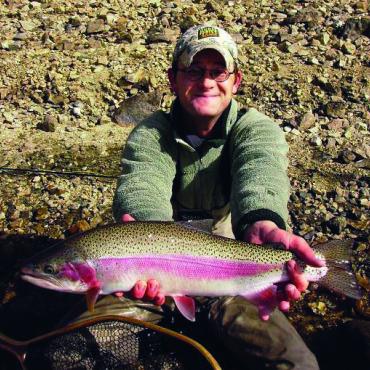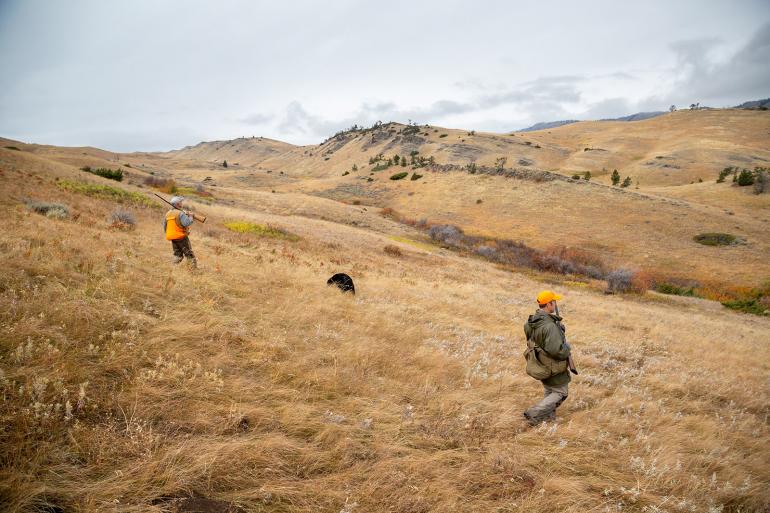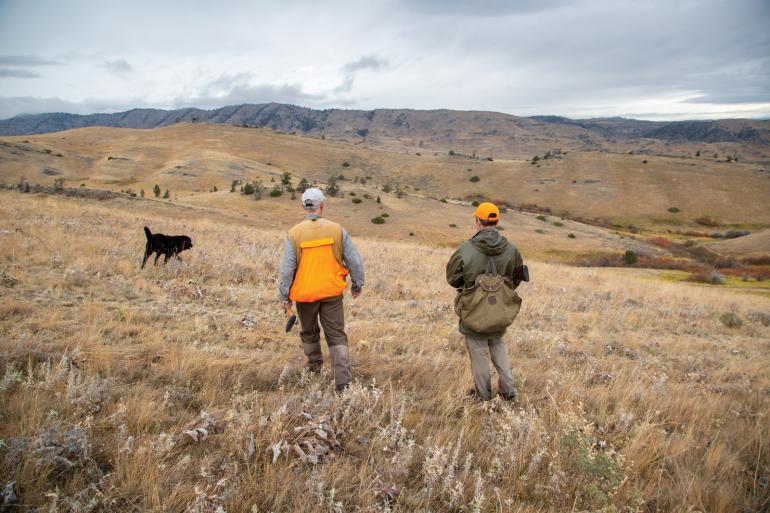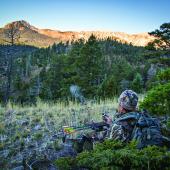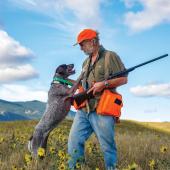Ditch-Chicken Delight
The thrill of a Montana pheasant hunt.
A gaudy pheasant blasts up from brushy cover like a party-popper improvised from 20 pounds of dynamite packed into a 50-gallon drum. A flash of colors, with speed that would make a rodeo clown jealous, erupts with a distracting, crowing croak. Roosters tend to stall a hunter from the shot. Pheasants are not hard to kill; they are hard to shoot. Perhaps it’s the sudden burst of color against the autumn hues of brown and buckskin dun, or maybe it’s the foot-long tail that causes one to linger too long and insufficiently lead the bird. Whether you’ve been fortunate enough to bag a bird or experienced the frustration of missing, the first shot on a pheasant will have you walking all day for the chance at a second. Add an eager-to-please and enthusiastic bird dog that was bred, born, and lives for these very moments, and pheasant hunting can be something akin to addiction.
Phasianus colchicus, or the Chinese ring-necked pheasant, is one of the most sought-after upland game birds in Montana. While not native to the region, these chicken-sized birds have proven hearty enough to survive and thrive in some of Montana’s harshest areas. When it comes to upland birds, wild pheasants—especially those on public lands—are one of the most difficult yet rewarding fowl to pursue.
Wily roosters, especially those in high-pressure areas, become snake-like. They stay low, sneak through cover, and will not flush unless almost stepped on.
Habitat
Ringnecks like what is commonly referred to as “edge cover.” Think ditches, coulees, edge rows, creek bottoms, and shelterbelts. Pheasants are drawn to keep house in brushy, briar-choked areas in close proximity to grain or cereal crop fields. Wheat, barley, corn, legumes, even alfalfa fields are potential food sources for pheasants. Fields close to creeks, ditches, rivers, and ponds, especially those areas with dense stands of cattails, are ideal places to find them. In Montana, agriculture is still the number-one industry. Ag means fields, fields mean food for birds. The birds you are after are likely as close to feed as they can possibly be, while still having quick access to cover.
Behavior
When flushed, a rooster will give away his hiding place, like a car alarm in a quiet cul-de-sac. During the off-season, roosters are brazened, often seen in the wide open during the full light of day. Why not? When you’re born with the colors of a Mardi Gras float, you might as well maximize your feeding time. Hens tend to be more secretive. Blessed with incredible camouflage, these diligent matriarchs hold tight to cover, especially when young are present. As hunting season progresses, the older, wiser roosters will revert to the lessons from their mothers. Some will hold in cover, using the moisture and decay odors to confuse a dog, or employing stillness and patience while predators pass by. Wily roosters, especially those in high-pressure areas, will become snake-like. They stay low, sneak through cover, and will not flush unless almost stepped on. Both hens and roosters tend to scurry away from trouble and will use flight as the escape of last resort. Top speed for a pheasant in flight can be 60mph.
In Montana, pheasant season starts several weeks later than general upland-bird season.
Gear
When hunting pheasants, you need a reliable shotgun. Here in the Treasure State, we are allowed to hunt pheasants with a shotgun up to a 10-gauge. Most wing-shooting experts and pheasant fanatics recommend a 12- or 20-gauge. Pheasant season spans a good portion of the autumn and early winter months. Be prepared for anything and everything—temps in the 70s or a foot of snow are both common occurrences during pheasant season. Layering is the key to staying comfortable and adaptable when pursuing these birds. A quality map is highly recommended. It is easier than ever to utilize technology and download land-ownership apps, such as OnX Hunt, to your smartphone. Most of the really good hunting happens in places where cell signal is scarce, so a chip for your handheld GPS isn’t a bad idea, either. Blaze orange isn’t required, but it’s a good idea. In some areas, big-game seasons are open in conjunction with pheasant season, so being seen is being safe. A splash of blaze is a great idea for your bird dog as well. Speaking of bird dogs, a well-trained and trusty dog is almost as critical to a successful hunt as a good shotgun.
Regs
In Montana, pheasant season starts several weeks later than general upland-bird season. Be sure you’re shooting at the right bird. Hen pheasants, which are illegal to harvest, can look a lot like a sharp-tailed grouse, especially when on the wing. Since pheasants are so heavily reliant on ag land for forage, they tend to spend most of their time on private land. If you plan to hunt these areas, landowner permission is required. Plan well ahead and get written permission in the off-season. The bag limit is three males (roosters) per day.
Kurt Dehmer owns Durty Kurty’s Guide Service.

